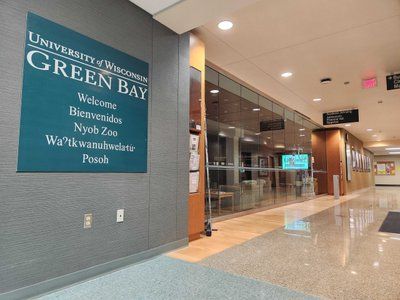By Tom Still
WAUKESHA – Speaking at last week’s state biotechnology conference, former governor and federal cabinet secretary Tommy Thompson sounded a lot like a man with higher office on his mind. Make that an oval office.
Thompson, who was last elected governor of Wisconsin in 1998 and who resigned as U.S. Health and Human Services secretary in 2005 a bit disgruntled with the Bush White House, would ordinarily be viewed as a politician whose time has passed. But the 2008 presidential election will be anything but ordinary. For the first time in nearly 60 years, neither party is likely to field a sitting president or vice president among its hopefuls. It is a relatively wide-open scenario that has a number of Democrats and Republicans wondering if lightning might strike a long-shot candidate.
Thompson is organizing a political-action committee, or PAC, so he can raise money and travel around the country. But there’s really only one state on his itinerary right now – the political bellwether state of Iowa, home to the Iowa caucuses.
Love them or loathe them, the Iowa caucuses are tailor-made for a candidate such as Thompson. The partisans who turn out for Iowa’s 2,000-plus precinct meetings every fourth January have a record of supporting presidential underdogs, of being drawn to “folksy” candidates who campaign best in main street diners and family kitchens, and favoring candidates who know how to speak to farm-state voters.
Better yet for Thompson, it’s not an especially expensive place to campaign. Advertising can blanket the state through a half-dozen television markets, the press is diligent in following caucus candidates as they comb the state, and Iowans have a penchant for showing up when the campaign circus comes to town. It is one of the last places in America where presidential politics can be practiced at a retail rather than wholesale level – and it’s the first state the national press corps tends to watch.
Both parties can enter Iowa with vanloads of candidates. It’s not unusual to see 10 or more candidates tromping through the state – there were 13 in 1988, for example – even when one party has an acknowledged frontrunner.
In 2008, the potential line-up on the Democratic side already includes Hillary Clinton, Al Gore, John Edwards, John Kerry, Wesley Clark, Bill Richardson, Evan Bayh, Howard Dean, Iowa Gov. Tom Vilsack and Wisconsin’s own Russ Feingold. The Republican candidates most often mentioned are John McCain, Bill Frist, Rudy Giuliani, Mitt Romney, George Allen, Condoleezza Rice, Jeb Bush, George Patacki, Mike Huckabee and Newt Gingrich.
Why not one more? That pretty much sums up Thompson’s attitude as he reflects on the roadmaps of Iowa.
There are drawbacks to a Thompson candidacy, of course. He’ll be 65 in November, he’s not wealthy enough to bankroll his own campaign, and he’ll be three years removed from public office by the time the caucuses are held. And not all of his political friends think it’s a good idea.
Yet Thompson may be banking on Iowa turnout math. It doesn’t take a lot of votes in Iowa to advance to New Hampshire, the historic first primary state. In 1996, there were eight Republican candidates in Iowa and about 96,000 people attended Republican caucuses. In 1988, there were about 125,000 caucus participants on the Democratic side and 109,000 at the Republican meetings. The order of business at caucuses is to elect delegates who support one candidate or another, so the average caucus voter is generally a political activist who will at least know his name and record.
In 2004, John Kerry emerged on top in Iowa’s Democratic caucus with about 37,000 votes. In 1976, Jimmy Carter won the Iowa caucuses with about 28 percent of the Democratic votes – or about 15,000 people. “Uncommitted” won more delegates than former Georgia Gov. Carter, but he became the story. Within 10 months, he was President-elect Carter.
Thompson may ultimately decide not to run, and to focus on family and his recent private sector callings. But if he’s ever going to reach one more time for the brass ring, 2008 in Iowa is the right time in the right state.
Still is president of the Wisconsin Technology Council. A former political reporter, he covered the Iowa caucuses in three presidential elections.
###





